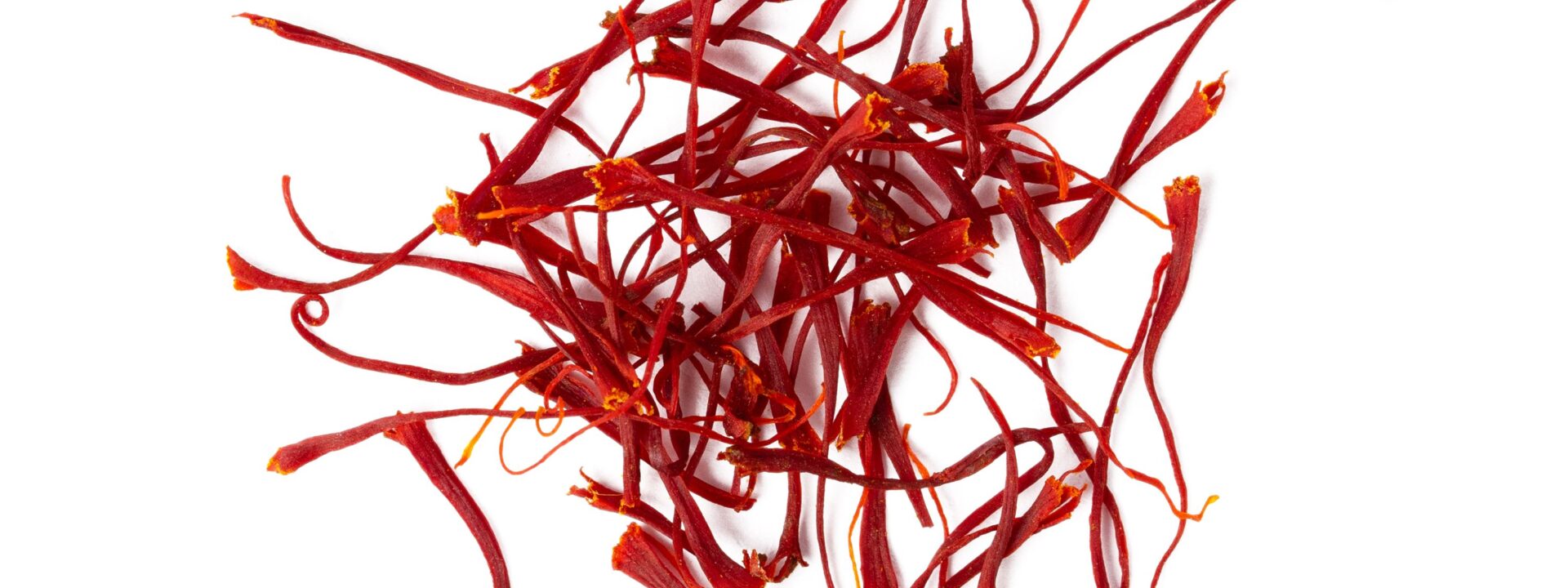Saffron is a spice I know well. Coming from an Iranian family, it was a staple in our kitchen—flavoring everything from rice to desserts. When I moved out, I was given a stash that lasted years; just a pinch adds a unique floral, earthy, or slightly bitter taste. To me, it tastes like home.
Globally, 200 to 400 tons of saffron are produced each year, with Iran supplying about 90% of it. While it’s a key ingredient in Persian cooking, it’s also widely used in Spanish, Italian, and Moroccan dishes.
Though once considered a niche spice, saffron is now popping up everywhere—from teas and lattes to wellness supplements. (I even spotted a saffron latte at a café in Cologne, Germany!) With its rising popularity, I decided to explore the health benefits of this childhood favorite. Here’s what I found.
### Health Benefits of Saffron
Saffron is known for boosting mood—not just because of its vibrant golden color. Studies suggest it can help ease mild to moderate depression.
One study notes that saffron has been used medicinally for centuries in places like Iran, India, and China. Its active compounds—crocetin, crocin, picrocrocin, and safranal—affect the nervous system, potentially improving mood, memory, and anxiety.
Small studies also suggest saffron may relieve pain, act as a diuretic, and ease menstrual cramps. Another study highlights its potential to help with depression in various conditions, from PMS to postpartum.
However, nutritionist Astrid Donalies points out that most research is still limited, and more studies are needed. Still, she says, including saffron in your diet is worthwhile: “Eating with pleasure and variety is already good for your health.”
One thing to note: The health effects of spices at home are usually mild since we use them in small amounts. “Saffron is expensive, so we typically use just a pinch—enough for flavor and color,” Donalies explains. But she adds that cooking with spices can help reduce salt intake, which is beneficial since most people consume too much salt.
### Beauty Benefits of Saffron
Saffron is also gaining popularity in skincare. Thanks to its antioxidant and anti-inflammatory properties, it’s used in anti-aging products to help keep skin healthy and resilient.
Research shows that safranal, a key compound in saffron, has a natural SPF of 6.6. While this isn’t enough for full sun protection, it adds an extra layer of defense in skincare formulations.
In short, saffron isn’t just a flavorful spice—it may also offer mood-boosting and skincare benefits. And while more research is needed, it’s a delicious and aromatic way to enhance meals and self-care routines.Sun Protection with Saffron
While an SPF of 15 is the minimum standard for sun protection, and saffron isn’t one of the EU’s approved UV filters, research shows that adding saffron extract to an SPF 20 sunscreen can boost protection by up to 43%. This suggests saffron could be a promising enhancer in sun care formulas, even if it doesn’t provide sufficient protection on its own.
How to Cook with Saffron
Saffron comes from the red threads (stigmas and styles) of the Crocus sativus flower. When dried, these threads add a golden hue (similar to turmeric) and a fragrant, slightly bitter, musky aroma to dishes.
To use saffron, crush the threads into a powder and soak them in lukewarm water or milk for a few minutes. This helps release its water-soluble color and volatile aromas. Add it toward the end of cooking—ideal for dishes like paella, bouillabaisse, or risotto. It also pairs well with couscous, cauliflower, or potatoes.
For desserts, saffron’s golden color and warm flavor enhance rice pudding, golden milk, or sponge cake. It blends beautifully with vanilla, cinnamon, and citrus zest.
How to Make Persian Tahdig
For me, saffron’s aroma alone is a wellness boost. That’s why I love sharing my grandma’s simple tahdig recipe—a crispy, golden Persian rice dish.
Ingredients:
– Basmati rice
– Potato, thinly sliced
– Saffron threads (or powder), soaked in warm water
– Butter
Method:
1. Cook basmati rice as usual, drain, and set aside.
2. Soak saffron in warm water to release color and aroma.
3. Melt butter in a non-stick pan and arrange potato slices evenly to form the crispy base.
4. Layer the cooked rice over the potatoes and drizzle with saffron water.
5. Cover with a lid, placing a kitchen towel between the pan and lid to trap steam.
6. Cook on low-medium heat until a golden crust forms.
Have a beauty or wellness trend you’re curious about? Email Vogue’s senior beauty & wellness editor at beauty@vogue.com.
